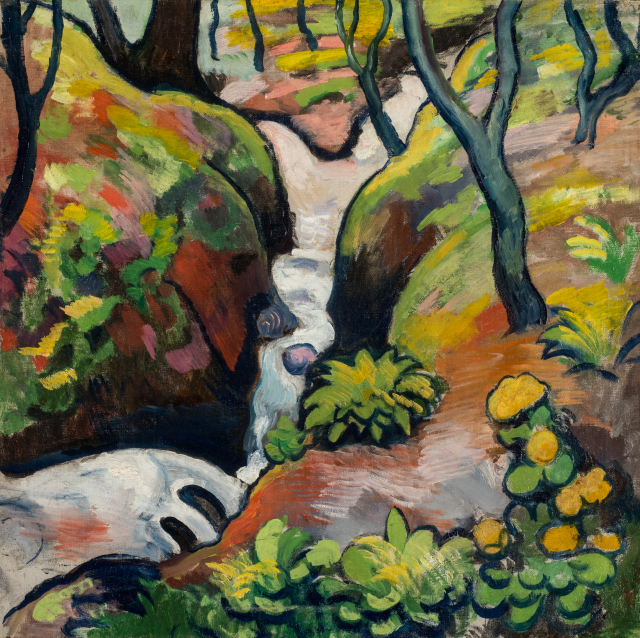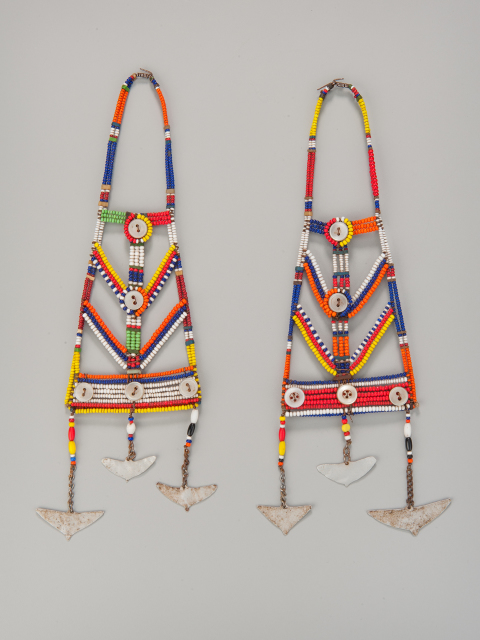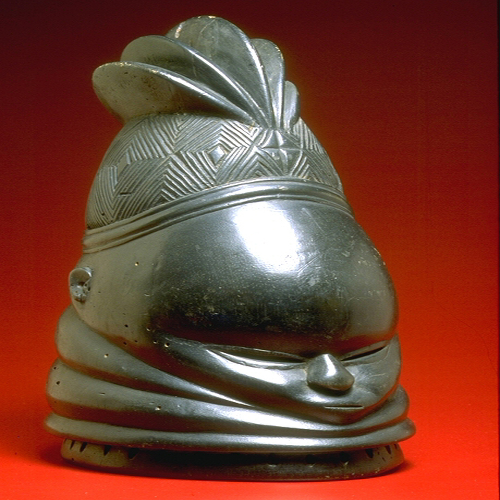Measuring Time: The Photographs of Jeffrey A. Wolin
Listen to the artist and the people he photographed as you look at photographs by Jeffrey A. Wolin.
Homage to André | Autobiography
Homage to André is one of my photo text pieces that addresses formative experiences and shape me as a photographer and as a person. I began writing directly on my photographs that seem to reference the most important parts of my life. They are a kind of autobiography and are a way that I could combine my photography and writing.
I met the legendary Hungarian photographer, André Kertész, when I was working as head of photographic services at George Eastman House not long before I moved to Indiana to teach photography. André lived in an apartment above Washington Square Park in Greenwich Village. I had heard from friends that he was quite approachable, despite his exalted place in the photographic pantheon. I looked him up in the Manhattan phone book and called him on his landline. When André answered, I told him who I was, that I loved his work and wanted to meet him, show him my photographs, and make a portrait of him with my eight by ten inch view camera. He agreed, and I made plans to drive down from Rochester. I made the central photograph of this composite image with my giant camera in his apartment on our very first visit. As it happened, it was his 84th birthday. I showed him my photographs and as he leafed through them, he would occasionally stop at one and say, this is good, this is honesty. That was the most important thing, a photograph could convey—honesty.
Over the next year or two, I would visit Andre when I could. We often sat around his apartment and talked about life and love. Sometimes we would walk around the village and photograph. Some of the smaller photographs in this composite piece were made during such visits. He liked having someone with him on the street. New York City in the late '70s was a dangerous place and he was worried about getting mugged. I was more than happy to walk around with my hero, the man who basically invented street photography and to see the world through his eyes.
My autobiography series was important in my career development because the photography world was still in the throes of formalism. Narrative art was discouraged and the print surface was sacrosanct to be left untouched. I was breaking the rules of form and content that were just beginning to be overthrown. As postmodernism began to revolutionize the art world. It was my first series to garner national attention. The Museum of Modern Art bought and exhibited work from my photo text series and other museums followed. Pretty much everything I've done subsequently continued my practice of using text with my photographs to tell stories.
Listen as the artist Jeffery A Wolin discusses his relationship with one of his photographic heroes, the Hungarian émigré artist André Kertész who was living in New York City.
Mišo Vogel | Written in Memory: Portraits of the Holocaust
There's this guy, Mike Vogel from Indianapolis. And he comes down and speaks to the students at Indiana University. And he would be a good subject for you. So, I went up to Indianapolis to his place and I knew he had a tattoo on his arm from Auschwitz. And I thought that that would be like the writing I do on my photographs. The writing that the Nazis did on the Jewish Auschwitz prisoners was a similar kind of mark making. And so, I wanted to start with that. I wanted to do a close-up of just the arm and the tattoo. But once I was there, I was more interested in Mike and his story, which was very moving. Behind him, on his fireplace, he had a photograph of his father. He was telling me the story about his father and his father dying and Auschwitz when he was there, when Mike was there too. So to take the picture, I did portraits of him. And he was very matter of fact. He'd spoken many times about the war and about his survival, and his coming to the US. But I asked him to hold the portrait of his father – This [photograph] is in the exhibition. He's holding a portrait of his father. And at that moment he slipped his hand under his shirt, over his heart and he started to cry. It somehow broke through. You know, survivors often build a little fence or a wall around their experiences. They can tell [their stories] as almost like a third-person: This happened, this happened, this happened. But it's not like it happened to me. It just happened. And this didn't. This broke it down into first-person. Into “This is my dad. He was killed.” It was very moving. And so I've used that image and I wrote his story and I wrote it in third person.
Jeff Wolin discusses meeting Holocaut survivor Mišo Vogel and making this photograph and hearing his story.
Owen Mike | From All Sides: American and Vietnamese War Veterans
This next portrait is Owen Mike, Ho-Chunk, Native American and Indian from Black River Falls, Wisconsin. A higher percentage of Native Americans fought in America's wars than any other segment of the American population. In his story, he talks about his combat service in terms of the warrior tradition.
I'm a native American Ho-Chunk from Wisconsin. Above everything, I accept my own death as a destiny. It's a great honor to die as a warrior on the battlegrounds. On or about Christmas 1968, I experienced my very first firefight. It was terrifying before the Dewey Canyon operation in the A Shau Valley, one of my closest friends was killed while walking point. I volunteered to take over his job. It's nerve wracking and tiresome to walk alone far up in front of my platoon and my company. Walking point, life expectancy is very short. Usually, the first contact with the enemy, you are killed or wounded. But I was good and I became a deadly killer and I hunted for the enemy and did my job well.
Jeff Wolin shares a story from Owen Mike (Ho-Chunk), U.S. Marine Corps Lance Corporal, who reflected on his combat service in terms of the warrior tradition from his Native American heritage.
Kevin is Shot | Pigeon Hill: Then & Now
That day started off with a normal summer day, that we normally did back then. We all went to the lake, partied around the place, what we called the loop. We got down there with the kids and everything, was having a good day and looked up and here sits a gentleman standing there urinating, right in front of everybody, in front of little kids, the ladies, everything. The women brought it to my attention. So I asked him to kind of go somewhere else with it, you know. Told him what he was doing was wrong. Everybody else that had been there all day long. All the men had been going cross street into the woods. He decided to have a few words for me. Got all upset. Called me a few names. Told me he'd be back. I was like, Okay, okay, whatever. You know. Didn't think about it.
Well, as I got thinking about it, I'm thinking, well, I'm down and Smithville. This is this kind of redneck country, but not, not so much, but it's kinda, you know. It has its people. And I look up and sure enough here this guy comes back, pulls in, jumps out with a four ten shotgun. Well, he runs over to me, points it at me and says me “Now, [n-word], tell me where I can't piss and where I can.” I'm like, “Dude, you had to go home and get a gun just because I asked you not to urinate for my daughter? to take a piss in front of my daughter and these women?” He said a few words. He started standing there and we started discussing it and you could tell he was nervous. Could tell he had never, I don't know if he had been in any kind of situation like that before, but it's just kinda intoxicated. So I'd really didn't want to get him too hot, but I wanted to stand my ground. Because I had all my family around and everything and I wouldn't try and let them get hurt for something that was just plain stupid.
We're standing there and I'm looking around. I'm seeing all these people and I'm like, man, this is ridiculous. You know, he's gonna hurt somebody. They’ve got nothing to do with this. So I asked him put the gun down. He says a few words to me, kinda stupid. Michelle on him actually, and asks him to put the gun down, too, and he says “No.” Well, when she asked him, she reaches for it, and he shoves her back. Well, when he shoves her back, I jumped down off my car, run to her and as I'm running to her, I hear is pow! [sound of hands clapping] I don't feel it. It doesn't really do anything to me. But next thing I know my friend’s in front of a car knelt down looking at me saying “Kevin, look at your leg!” I’m like, huh? He’s like “look at your leg”. I'm like “What?” He's like, “Dude, you got shot!” And I looked down and by time I looked down the whole leg was just covered with blood. Couldn’t even see the color of my shoe.
So I rip my shirt off, because I just got out of the Marines. I probably been out maybe six or seven months, something like that. So I rip my shirt off, tied it around my legs as a tourniquet. Looked at my friend, said “Hospital.” Looked back at the guy who shot me. He's standing there in shock and awe. His eyes are about yea big. He's nervous, he's sweating. He’s shotgun to get to shell out. Well, I'm thinking if I can get to him before he puts his shell in there, I could slam him because he's standing between the car and the door, slam him with the car door, get his weapon, shoot him, self-defense. No problem. Then I thought, well, if I bum rush him and he gets a shell in there and he cocks it at the same time and fires it…now I’m wide open to him. He could hit me anywhere and I'm gone. I look at my friend and I say “Yo, hospital.” We get in the car, peel out, go to the hospital. He shoots at us again. Another friend of mine backs his truck up to block his view. So it hits his truck and we get out of there and go back. The girls follow him to where he takes off to. They show the police where he’s at. They arrest him. He ends up doing eight years. Do four. Gets out in a year-and-a-half.
For three days, I'm in that hospital and when you're in something like that, you start to realize how short and how precious life is. Because three days and that’s all it takes. You know, you die. You go to the morgue, they hook you up, do all their mass. You go to the funeral home. You got a wake. Next day, you're in the ground. Three days. That's it. If you're lucky. Three days. So during that three days, I had a lot to think about. A lot to contemplate. A lot to be grateful for. That I was still here. because, I mean, circumstances arose like that and just a few inches lower or higher, I was gone.
Listen to a firsthand account from Kevin.
Artist Statement | Faces of Homelessness
My current photo-text series, Faces of Homelessness, endeavors to show a wide range of individuals who are currently experiencing homelessness or who have experienced it in the past. There has been a considerable increase in awareness of this crisis. As our society is moving in the direction of shredding our social safety net, making the lives of our most vulnerable fellow citizens that much harder.
Like my previous long-term projects, I interviewed my subjects and include their stories in their own words directly on their portraits. This strategy gives voice to the people I photographed and allows audiences to directly connect stories with faces. Given the sensitive nature of the subject, I don't just wander the streets to photograph. We don't need more images of people sleeping on heating grates. Instead, I worked with organizations that deal with homelessness every day. I've been partnering for the past 3.5 years with Chicago Coalition for the Homeless, one of the nation's most respected non-profits dealing with this crisis. CCH helped me to introduce me to individuals to photograph and interview, which really helps with the issue of informed consent, an essential component of all my work. I strive to establish a relationship of trust with the people that I photograph and to portray them with dignity.
I've learned from CCH and other organizations such as Venice Community Housing and safe place for youth in Los Angeles, that homelessness takes many more forms than living on the streets. And that the popular image of all homeless as mentally ill and, or drug addicts is simplistic and often incorrect. It's important to dispel these stereotypes if solutions to this widespread problem are to be found. In fact, most people experiencing homelessness are invisible. They're living doubled up with friends and family. About 16,000 kids in Chicago Public Schools lack a permanent address. They live in shelters, in hospitals, or single room occupancy hotels. There are homeless veterans, individuals and families who were evicted when their residences were foreclosed on. People who had sudden medical expenses that insurance didn't cover, job loss, divorce, death of a spouse or parent, domestic violence coming out as gay, leaving foster care, lack of affordable housing, etc. They all drive homelessness. Several individuals I photographed are working poor, living in their vehicles or intense and working full-time jobs.
While I was engaged in this long-term series, the COVID-19 pandemic hit. Needless to say, it had a rather negative impact on this vulnerable population. Accordingly, I added portraits and stories of several homeless individuals who came down with the virus but lived to tell the tale.
I hope my photo texts images can contribute to the public discourse about causes and possible solutions to some of the difficult issues surrounding the worldwide homelessness crisis.
Jeff Wolin shares a story about the creation of his Faces of Homelessness series.
David B, Venice Beach | Faces of Homelessness
After working nearly 20 years, including as an auto and bus mechanic, nearly ten of them as a union mechanic, I turned to writing. I worked as well in the family business until it failed in 1992. I was 37 years old. I started living in my car. Soon it was a tent on a sidewalk.
80% of the meals in the past 20 years I've eaten have now come from dumpsters. In large part because I was refusing to take any money from the government. Since conservatives are always berating us poor as the ones taking big bailouts. So, I mostly only ate the food that society throws away. And seeking, as well, to contribute, I've organized four different “Food Not Bombs” collectives. They're a global movement.
When I was a working-class bus mechanic and a typical American consumer, I would gleefully go to the market and buy up all the foods advertisers want us to buy. My health wasn't good. I wasn't eating nutritious food. And my budget didn't seem to allow me to buy more nutritious foods that wealthy people can afford. But as a homeless person, I discovered that even eating from the dumpsters of organic markets was healthier than merely eating the poor food, so extensively marketed to us average Americans.
Surprisingly, even to me, It's here in homeless—but still contributing—that I've found now the best relationships, most peace, and best help of my entire life
Listen to a firsthand account from David.
Credits | Measuring Time Pathway
Audio for this presentation, provided courtesy of Jeff Wolin, was excerpted from videos from the archive of Jeffrey A. Wolin, including video content by Ben Wolin. Josh Brewer advised on editing.
Suggested Pathways

Mindfulness
The series of audio entries on this pathway focus on the practice of mindfulness. Mindfulness is a way of observing and accepting the present moment. It can be especially effective when used while experiencing works of art.

Clothing and Personal Adornment
This path considers how and why human beings create art for personal use. Clothing, jewelry, cosmetics, hair styles and hair accessories, and other objects added to the body are personal statements that also reflect shared values within societies.

Pairing Art and Music
Combine sight and sound for a unique imaginative experience.


